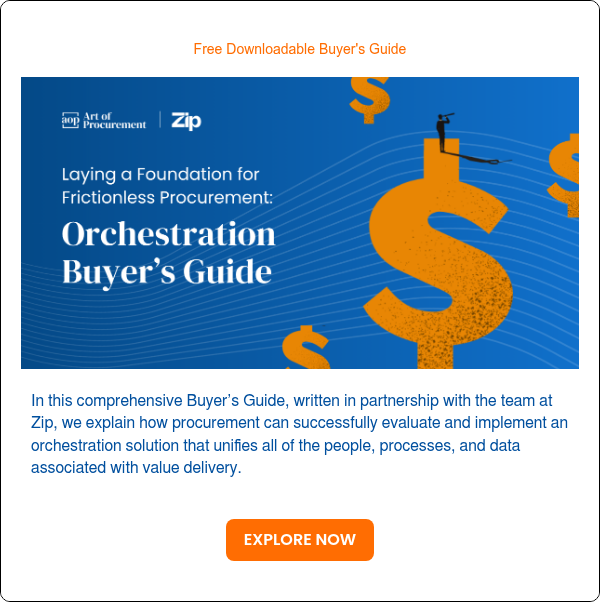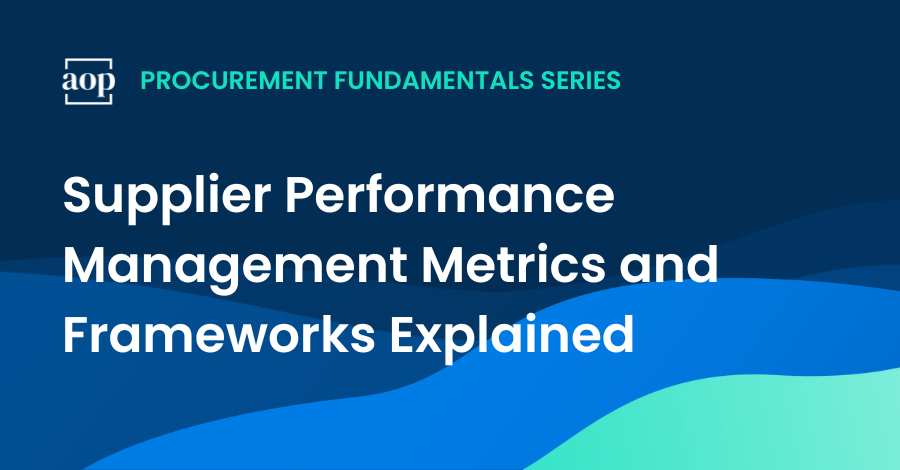
As a procurement leader you need to be a strategic partner for your internal and external stakeholders. This sometimes requires an ability to assess and communicate market dynamics in a clear and meaningful way.
One classic tool that I use to frame market dynamics is Porter’s Five Forces. If you’ve worked in procurement as long as I have, you’ve most likely come across it many times and might even question if it is still relevant. (Hint: it most certainly is!)
Let’s go through practical tips on how to align Porter’s Five Forces to some of the common challenges faced by procurement teams. After we’ve covered some essential definitions we’ll go through how the framework can be applied to strategic sourcing, category management and supplier relationship management.
Recap on Porter’s 5 Forces
Porter’s Five Forces is a framework for analyzing the competitive landscape of an industry by examining the threat of new entrants, bargaining power of suppliers and buyers, threat of substitutes, and rivalry among existing competitors.

First introduced in 1979 by Harvard Business School professor Michael Porter in his Harvard Business Review article “How Competitive Forces Shape Strategy,” this framework provides a structured approach to analyzing the competitive forces at play within any industry.
Porter’s Five Forces has been taught in universities for decades and is one of the most recognized strategic management frameworks. Here is how you can see these from the perspective of a modern procurement organization.
Threat of new entrants
This force examines how easily new competitors can enter the market you operate within. A market with high barriers to entry (e.g., high capital investment, strict regulations, strong brand loyalty) is less susceptible to new competitors, potentially giving existing suppliers more power. Conversely, a market with low barriers to entry increases competition, often leading to better prices and more favorable terms for procurement.
Bargaining power of suppliers
This force examines the influence suppliers have on price and availability. Suppliers hold significant power when there are few alternatives, offer unique products or services, or when switching suppliers is costly. Strong supplier power can impact a buyer’s profitability and flexibility.
Bargaining power of buyers
This force analyzes the influence you as a buyer have on price and terms. Buyers gain leverage when they purchase large volumes, have multiple sourcing options, or when they account for a large portion of the sales of a supplier. Strong buyer power is usually favorable for procurement. It can help secure favorable pricing and preferential contract terms.
Threat of substitute products or services
This force considers how easily customers can switch to alternative products or services that fulfill the same need. The threat is high when substitutes are readily available, offer significant price advantages, or when switching costs are low. If the threat of substitutes is high it may be difficult to justify higher prices.
Rivalry among existing competitors
This central force analyzes the overall intensity of competition within an industry. High rivalry, driven by factors like numerous competitors, slow market growth, or high exit barriers, can result in price competition and the commoditization of different solutions.
Porter’s Five Forces in Strategic Sourcing
Porter’s Five Forces can give a balanced understanding of market dynamics to help you describe and drive value beyond simple cost reduction. For this reason, it can be applied to different tasks and steps of your strategic sourcing processes.
Define your category profile
You can use the Five Forces framework to describe competitive market trends in your category profile. When you’re doing this you don’t need to go into great detail. Simply describe the current snapshot “as-is” state of the competitive landscape and what factors procurement organizations need to keep in mind on a high level.
Anticipate market disruptions
Too often procurement is seen as a function that looks in the rearview mirror. You can use Porter’s Five Forces to build a view of future needs and market trends. Here you can explore emerging technologies, business models, and alternative solutions that could disrupt existing supply chains. This awareness allows you to be ahead of innovations and mitigate the risk of being locked into outdated agreements.
Describe supplier dynamics
As a procurement leader you sometimes need to be able to step into the shoes of your suppliers. Porter’s Five Forces can be a way to describe the relative position and motivations of key suppliers.
In scenarios where supplier power is high, characterized by limited supplier options or unique offerings, procurement should prioritize building strategic partnerships. Conversely, when buyer power is dominant, procurement can leverage its position to negotiate favorable pricing, payment terms, and contractual agreements.
If you want to go further in assessing the needs of your suppliers you can consider building an additional supplier preferencing matrix.
Build the case for change in strategy
Porter’s Five Forces can also help build the case for a shift in sourcing strategy. It gives executives and key stakeholders a clear and easy-to-understand framework to reflect on changing market dynamics. For example, you can use it to show changes in supplier power, the emergence of disruptive new entrants or substitutes, or the impact of intensifying competitive rivalry on pricing.
Uses for Five Forces in Category Management
You don’t need to limit the use of this framework to strategic sourcing projects. Porter’s Five Forces can also be a framework to inspire aspects of your broader category strategy.
(Re-)assess your category taxonomy
You can analyze the differences in supplier power, threat of new entrants, and competitive rivalry within specific categories or sub-categories to get a broader perspective on where to focus your time. This could help prioritize resources towards categories with more favorable market dynamics where you can secure better value.
Informed supplier relationships
You can have open and transparent discussions with key suppliers about market dynamics and see if their views align with yours. Focus on building long-term relationships with these key suppliers, collaborating on innovation, and potentially securing preferential pricing or supply guarantees.
Address potential disruptions
Let’s say you’re responsible for the “IT Software” category. By analyzing the threat of substitutes, you identify a rising trend of open-source software solutions gaining traction. Armed with this insight, you can proactively evaluate these alternatives, assess their potential impact on your current contracts, and adapt your sourcing strategy to incorporate these emerging solutions if they offer superior value.
Communicate revised category strategy
For a Category Manager, part of your job is to describe why you do things in a certain way to internal stakeholders. Porter’s Five Forces can be a framework to communicate how you prioritize your time and resources – and what your vision is for the competitive dynamics of the category going forward.
Bottom Line of Porter’s Five Forces in Procurement
As a procurement professional, you’re likely to come across Porter’s Five Forces many times in your career. Even though the framework has had decades of use, it is still very relevant in today’s world when you’re working as a CPO or a Category Manager.
Like many other tools, the Five Forces can help you define and communicate your strategy to internal and external stakeholders. You’ll find plenty of use for it in strategic sourcing projects and its role in broader category management can’t be dismissed.
Related resources and articles:
– The Kraljic Matrix Simply Explained
– Build Your Category Management Framework with Five Evergreen Principles
– How to Build A Strategic Sourcing Strategy (that Goes Beyond Category and Supplier Management)
– The Competitive Expectations Behind the Google Antitrust Trial






